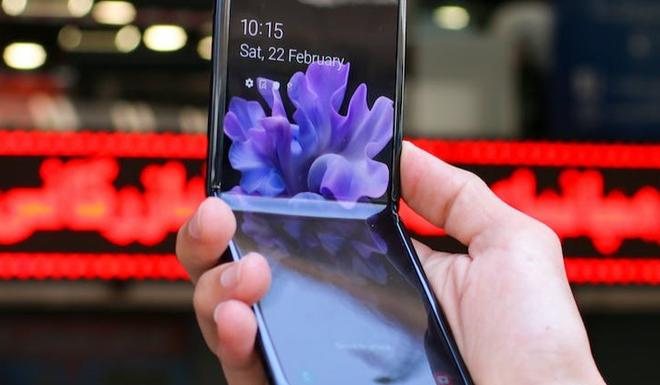Published 17:59 IST, March 17th 2024
Bend or fold: Is flexibility the new norm for phones?
With Google expected to announce the latest intervention into its foldable phones range, here’s looking at the trend of bending and folding smartphones

Smartphones are getting sleeker as they get. With larger displays and more room for touchscreens, the next advancement is making them compact.
The Global sales of foldable smartphones is expected to grow by over 50 percent this year, according to International Data Corporation.
The evolution
Foldable phones have been around in concept since 2011, with Japan’s fine ceramics company Kyrocera coming up with the first device.
The dual-screen Android handset looks like two phones stacked together, with a black partition - the first concept of hinge in smartphones.
But come 2018 - Chinese electronics brand Royole’s FlexPai became the first commercially available smartphone which could be folded outward, without a visible hinge, and a large 7.8 inch display.
The phone was not foolproof with its advancements either - it had uneven bezels, or a border between the screen and frame of a computer monitor, smartphone or any other computing device. The build quality was also not upto the mark, and its software was pretty old-fashioned.
The hinge mechanism was finally addressed in Samsung’s prototype - the Infinity Flex Display that had two screens but they seamlessly integrated to form a miniature tablet.
This technology went on to become the Galaxy Fold unveiled in 2019, but its launch was delayed due to durability concerns.
Motorola, which was best known for its RAZR range of keypad flip phones in 2003, forayed into the launch of a screen that could fold onto itself - making the phone display fold into a square.
But the launch in 2020 was rather muted, because of its questionable build quality.
The same year, Samsung launched the Galaxy Z Flip around a similar flip phone concept - flipping the screen into a small square unlike its two display phones merging into a mini-tablet.
With a foldable glass display, faster processor, larger battery, higher-res display, and better cameras - the phone also became more affordable.
The advent led to a bandwagon of launches in the category from Honor Magic to OnePlus Open, ranged over Rs 1 lakh. More affordable options include Tecno's Phantom at Rs 54,990. Vivo and Xiaomi are in the works for launching their version of foldable phones. Google Pixel Fold was announced in 2023.
Fold to Bend
Motorola in 2023 presented its concept device - a bending smartphone - at the Lenovo Tech World in October.
The flexible display lets the smartphone transform to a smartwatch. With a 6.9 inch screen coupled with a bendable back material of woven fabric, it also has magnets which help it attach like a wristband.
To address the challenge of bendability, Motorola has also come up with several thin batteries that are placed on the back of its adaptive display.
With a self-standing position that reduces the display area to 4.6 inches, it also has a fabric on the back of the device for long hours of wearing.
Samsung has forayed into the trend, with the launch of its ‘Cling Band’ at the Mobile World Congress this year.
With a similar 6.9 inch screen as Motorola, but needs no magnetic band to be worn.
The user interface also adjusts automatically to how much the phone is folded - which means users will have access to the entire UI irrespective of how the phone is bent.
It is predicted that these technologies will not come into mainstream markets for buying atleast till a few years, since even foldable phones came as a concept five years ago.
How feasible is it?
The idea of bending and folding phones is lucrative to users, but has its challenges.
Even after years, the two-phones-stacked on each other analogy does not leave these devices, which makes them bulky in case of the horizontal flip phones.
The phones are also devoid of any features that are compelling enough to justify the technology, or its pricing.
Horizontal phones are too bulky to be opened with one hand, while the crease of vertical folding phones can have issues of the phone not working due to scratches on folding.
But users are keen on the multitasking functionality, and how it opens up possibilities for better reading, viewing and gaming experiences.
It also doubles up as a tripod for selfies, and is great for video calls.
Updated 17:59 IST, March 17th 2024


